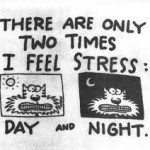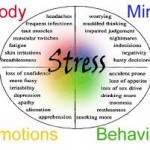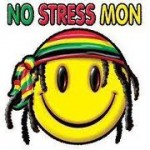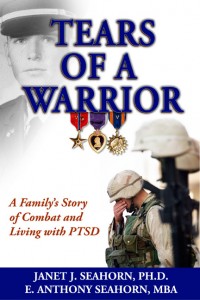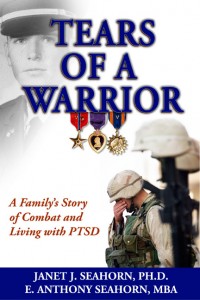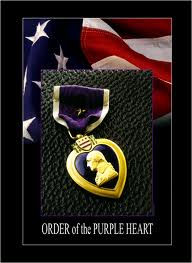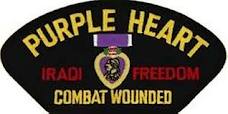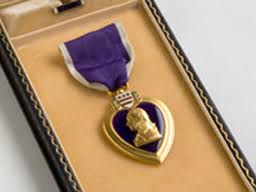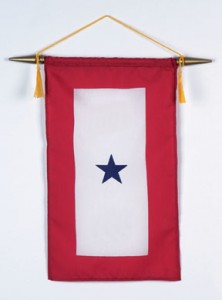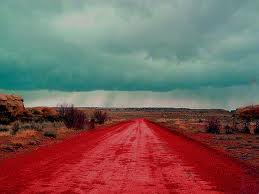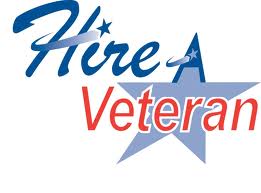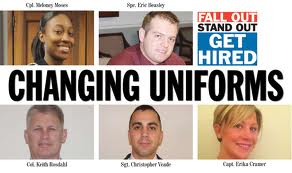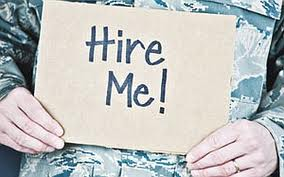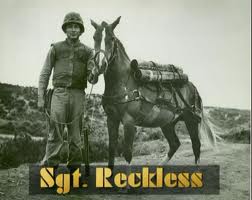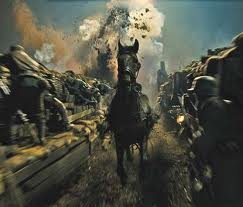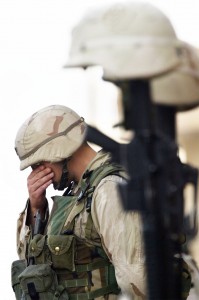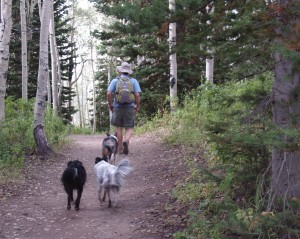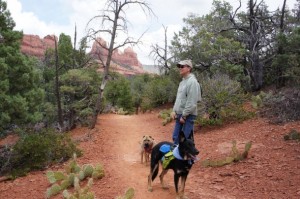Mar
19
OUT OF ORDER – A NEW OPPORTUNITY
Filed Under First Assist Monitor, Stress, Tears of a Warrior | Comments Off on OUT OF ORDER – A NEW OPPORTUNITY
by Janet J. Seahorn, Ph.D
Sometimes do you feel like you have an “Out of Order” sign flashing over your head? It can be an uncomfortable feeling at best, or a very disturbing high nervousness that can’t quite be explained. The sign often appears unpredictably. I often thought, wouldn’t it be helpful if only we could have some warning of the situation before it fully sets in and plunges us into a feeling of being out of control? Well, now that may be a possibility for some individuals.
There is a new study being conducted by psychologist, Dr. Janis DiCiacco, who has spent the last six years developing a stress tool called the First Assist Monitor. It is a small patch that can be worn on the back of the left hand that allows the wearer fast and reliable awareness (usually less than 20 seconds) of his/her physiological arousal level.
Following is a brief explanation of the research around the patch. Studies show early detection of stress and negative emotional states can help a person take early corrective measures to get back in balance. According to the Mayo Clinic, “the long-term activation of the stress response system – and subsequent overexposure to cortisol (the stress hormone) and other stress hormones – can disrupt almost all of one’s body processes. This puts one at increase risk of numerous health problems.” The First Assist Monitor can help the individual learn to notice and listen to what is happening in the body and do something right then that assists the person’s ability to ease the “out of order” situation and restore a sense of balance.
The way the patch works is on a traffic light concept. When we perceive our environment as safe, our nervous system allows us to feel a sense of balance – the GREEN zone. If our bodies perceive danger, the nervous system begins to move the line to the YELLOW area. If, however, our environment is perceived as Life Threatening or extremely hazardous it indicates that our stress hormone, cortisol, is high and the patch color will be in the RED zone. The ‘reference line’ at the bottom of the patch allows the wearer to continually know their zone. It is important to understand that there is “good stress” and “bad stress”. “Good stress” keeps us motivated and out of harms way. However, staying at high physiological arousal levels is considered “long-term activation” and thus “bad stress”.
Why is this useful, you may ask? Consider how you might be able to do something to change this sense of overload. You could begin to deep breath sooner, take a short walk, move to a quieter area until your arousal moves into the GREEN zone, or any number of interventions that you know can help.
The First Assist Monitor currently is undergoing its third and final evaluative study in sites throughout theUnited States. Dr. Janis DiCiacco is offering complimentary patches to a limited number of veterans and military personnel along their families in hopes that it can be beneficial in reducing chronically high physiological arousal levels.
The only condition is the individual must use the patch daily for a minimum of 7-10 days and completes a short, anonymous questionnaire regarding the results of the First Assist Monitor.
If you are interested and wish more information, please contact Dr. DiCiacco directly at jdiciacco@earthlink.net.
P.S. The patch is safe, comfortable, and non-invasive. It is made in a FDA approved facility in the United States.
Mar
15
“Tears of a Warrior” eBook
Filed Under eBook, Events, PTSD, Tears of a Warrior, Today's War | Comments Off on “Tears of a Warrior” eBook
by Tony & Janet Seahorn
Mar
12
EXPLAINING PTSD IN A VIDEO
Filed Under Combat PTSD, PTSD, PTSD treatment, TBI & PTSD, Tears of a Warrior, Trauma, Veterans | Comments Off on EXPLAINING PTSD IN A VIDEO
by Janet J. Seahorn, Ph.D
For centuries societies have been trying to explain why warriors return from combat “stranger” than before they had left. In our book, Tears of a Warrior, we wrote about how the Roman’s sent their troops who had recently arrived back from battle to a tranquil farm away from the city to recoup from their emotional wounds.
It seems like every war had its own special term for such suffering; words such as combat fatigue, shell shock, warrior’s heart, etc. However, none of these really explained much about why the individual wasn’t able to put the war behind them and get on with their lives.
Joe Novak, another of our readers sent this YouTube video to Tony. For the person who has never experienced combat, this will be an informative eight minute clip which both “shows” and “tells” the effects of battle. For those who have been to hell and back, you may not need to view the film; you have already lived it. If you do, keep the last message in mind as you continue your healing journey back to your new normal.
http://www.greatamericans.com/video/Vietnam-Vets-and-PTSD;Veterans-Videos
Blessings and, once again, Thank You for Your Service.
Tony and Jan Seahorn
Both KINDLE & NOOK can be ordered directly from our website.
Feb
25
Purple Heart Warriors (Documentary)
Filed Under Purple Heart, Tears of a Warrior, Veterans, War | Comments Off on Purple Heart Warriors (Documentary)
by Tony Seahorn
Purple Heart Warriors (Documentary)
http://www.youtube.com/watch?v=kAtPzFvbJsI&feature=share
Feb
10
A HOLOCAUST OF THE SPIRIT
Filed Under American Patriotism, Holocaust, PTSD treatment, TBI & PTSD, Tears, Tears of a Warrior | Comments Off on A HOLOCAUST OF THE SPIRIT
by Janet J. Seahorn, Ph.D
It is interesting how many people still have not heard of Post Traumatic Stress. It’s as if they have been living under that rock in the Geico commercial. Maybe part of this circumstance is due to the fact that less than 1% of Americans are currently serving in the military. During WWII one could walk down most streets throughout the U.S. and count at least five houses that had a star in the window.
Today, as in the Vietnam War, we no longer have signs that signify to others that a family member is serving overseas. Little is shown to symbolize the sacrifice of the few. Somewhere a child is missing his father or mother each night before she goes to bed. Somebody’s mother may be crying herself to sleep again, worried sick about the safety of her child. A spouse is having to carry on every detail of daily chores by herself/himself and doing it each day with a loneliness that shatters the heart.
Many ask us what it is like living with PTSD. For me, I think the best description is the trauma of combat leaves many vets with a Holocaust of the Spirit. Webster’s Dictionary defines holocaust as a “vast or total destruction, usually by fire; great loss of life or property; a sacrificial offering consumed by fire”. Such a description is pretty accurate when you think about it. During battle, not only is there physical fire, there is the mental and emotional fire — a fire in the heart, brain, and soul. Then there is that word “sacrifice”. Sacrifice is always the consequence of any combat experience: sacrifice for one’s country, sacrifice for unknown people in unknown areas of the world, sacrifice for one’s fellow troops, and sacrifice of families left behind to wait and pray for their loved one’s return.
As with every Holocaust, loss of life is ever present. And that life, if one survives, will never be the same. The fire of battle has consumed what a person was before the experience, and left him with scars that tend to break and reopen with the living of each new day. It is a never ending journey towards healing. Some days are better than others, but not one day is ever the old picture of “normal”.
Yet, here is the important part of any Holocaust to remember … It can be survived! Like the mythical bird, the Phoenix, who was burned beyond all recognition and rose from its ashes to become an immortal body and spirit, many of our PTSD burdened veterans achieve a similar destiny. Both are warriors of distinction and beauty. Both died in their own painful fire, and both became molded into something purer in spirit and stronger in mind and body.
It is easier to endure the fire if you can hold onto something precious to the heart and spirit. Therefore, I included the following old Pueblo Indian Blessing that my brother recently shared with me (365 Days of Walking the Red Road)
Hold on to what is good, even if it is a handful of dirt.
Hold on to what you believe, even if it is a tree that stands by itself.
Hold on to what you must do, even if it is a long way from here.
Hold on to life, even if it is easier to let go.
Hold on to my hand, even if I have gone away from you.
Feb
2
VETS, JOBS AND MISCONCEPTIONS
Filed Under Tears, Tears of a Warrior, Troops, Veterans, War | Comments Off on VETS, JOBS AND MISCONCEPTIONS
by Janet J. Seahorn, Ph.D
Recently, Tony and I visited with a group of veterans from the Military Order of Purple Heart. Attending were vets from WWII, Korea, Vietnam and the current conflicts. While discussing our book, Tears of a Warrior and the issues of PTSD, we got on the topic of how challenging it is for veterans returning from war to find a job. Only in recent times has the issue of work for veterans become clearer.
Many of us thought veterans who came home from serving in WWII were greeted with big parades and wonderful new career opportunities. For years I was under such an assumption. Then I talked with several WWII veterans and what they described was something much simpler. For most, once they returned home they did what historically other veterans had done before them… they went home, tried to find a suitable job and raise a family. Little was written or said about the struggle in finding employment or integrating back into civilian life. For many, there were no parades, no bands welcoming them home, only the test of getting on with life.
Eric Jensen explains in his book about his father, Forever and a Day: The World War II Odyssey of an American Family, how hard it was to find work after the war. As he wrote, many of the jobs were already filled by civilians who had those positions during the war. When the veterans returned there were not as many opportunities for employment as we first believed. Jensen wrote how frustrating it was for his father to have spent so many years away from his family only to return to another struggle – finding a job that would pay enough to support his young family.
Today, too many employers believe erroneously that vets returning from Iraq and Afghanistan may be suffering from PTSD or TBI and are reluctant to hire someone who may be emotionally compromised. We have written on several occasions how this is simply not the case for the majority of combat personnel. Military personnel have proven over and over again that they are bright, committed and competent employees. Given a task, they will make sure it gets completed in a satisfactory manner. They will show up daily, even when they are tired or under the weather. Veterans are some of the most proficient and capable members of an organization.
Part of the healing process of our soldiers, both young and old is to value their sacrifice for our country by honoring them with suitable jobs. One struggle we can help them avoid is a struggle to find work. As a country and as a community perhaps offering employment can be a step of vast significance.
In addition to mending them, “If we send them, let’s then employ them” when they return.
Jan
17
A HORSE NAMED RECKLESS
Filed Under Combat PTSD, Sgt. Reckless, Tears, Tears of a Warrior, War, War Horse | Comments Off on A HORSE NAMED RECKLESS
by Janet J. Seahorn, Ph.D
Amazing story!
This was sent to us recently from one of our readers, Larry Mathena. We had just seen Steven Spielberg’s movie, War Horse, which chronicled (even fictionally), the high cost of war on horses during WWI.
Like people, our four-legged comrades share similar emotions of friendship, love, pain, and grief.
Reckless, however is a true story of a courageous animal that fought in the Korean War.
Read on and view the video. I am sure it will touch many of your hearts like it did ours.
A special thanks to Larry for sharing this heroic story.
|
Jan
10
THE MAN I DIDN’T KNOW
Filed Under Combat PTSD, Family, PTSD, Tears of a Warrior, The Man I Didn't Know, Veterans, Vietnam Veterans, War | Comments Off on THE MAN I DIDN’T KNOW
by Janet J. Seahorn, Ph.D
This is the title of a book sent to us by Marie Leduc, the wife of a Vietnam Veteran who co-wrote it with retired naval aviator, Art Schmitt, Ph.D. Later Art got his degree in psychology. The Man I Didn’t Know: The Stories of Wives and Families of Vietnam Veterans who suffer from “Post Traumatic Stress Disorder”, is a collection of stories and poems written from the perspective of those most directly impacted by combat.
The articles are heartrending and the poetry will literally place you in the hearts and souls of the writers. While reading through the many tales I found several statements pretty sobering and thought provoking. Some statements gave me an unusual viewpoint of war, especially the last few wars we have fought and left without a clear victory. I have included several small snippets of some of these in this blog.
- “The United States did not lose the war in Vietnam, the South Vietnamese did. The last American troops left Vietnam on March 29, 1973, (however, the last flight out wasn’t until 1975). We did not lose the war… we stopped fighting” (p. 16). Recently, December 15, 2011 we raised the last American flag as we leftIraq. I wondered if years down the road we will describe this last conflict in a similar manner.
- “There are two kinds of PTSD… acute, which is treatable, and Chronic, which is manageable”. More Vietnam veterans, per capita, suffer from chronic PTSD than from any other war. The reasons for this is unknown, but it may be that it was an unpopular war and the veterans were not welcomed home” (p. 16).
- In another article, To Answer Your Question, by Ed Ruminski, the veteran is trying to explain to his son what combat was like, how time stopped and actions were both quick and in slow motion. How he had to be “constantly watching, listening to my senses”. In the end he merely states, “They call it war, and to answer your question son, yes, I have killed somebody. What I was unaware of was how by that process I just described, I was also killing myself” (p.19). Sadly, many of our Iraq and Afghanistan troops are returning with parallel sentiments.
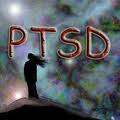 These are just a few statements from the book. The various writings describe the wounds of the minds, how scary it can be for a family to negotiate the many behaviors and emotional ups and downs of their beloved warrior, how a mother must learn to cope with the death of her son while visiting the Vietnam Wall to stay connected, and how PTSD affects children when their under developed minds and bodies leave them vulnerable to actions which they may never fully understand. In the end, this last quote by Jacqueline McVicar (p. 85) really says it all.
These are just a few statements from the book. The various writings describe the wounds of the minds, how scary it can be for a family to negotiate the many behaviors and emotional ups and downs of their beloved warrior, how a mother must learn to cope with the death of her son while visiting the Vietnam Wall to stay connected, and how PTSD affects children when their under developed minds and bodies leave them vulnerable to actions which they may never fully understand. In the end, this last quote by Jacqueline McVicar (p. 85) really says it all.
“His fight was in Vietnam,
Ours is the Vietnam in him.”
Ordering information: ISBN: 1-4196-2452-0 www.booksurge.com 1-866-308-6235
Dec
31
HARD DECISIONS
Filed Under Aging, Healing, Tears of a Warrior, Veteran Benefits | Comments Off on HARD DECISIONS
by Janet J. Seahorn, Ph.D
 “You never change things by fighting the existing reality. To change something, build a new model that makes the existing model obsolete.” -Buckminster Fuller
“You never change things by fighting the existing reality. To change something, build a new model that makes the existing model obsolete.” -Buckminster Fuller
What is it about change that makes us crazy? Is it the sense of what will be lost against the uncertainty of what might be gained? Is it the reality that in most change situations friendships and services will be altered? Or is it that almost all change requires individuals to deal with the vagueness of questions and conditions that either can’t or are refused answers? At any rate, change demands making decisions that may or may not be made according to what is best for those closest to the resolution. In essence, given our current economy, many decisions are based more on the bottom line of funds, and people are left to make the most of the situation.
For the last several months the veterans and people of Hot Springs, SD have been caught up with a proposal that that will change the way and the location of how VA services are delivered to that area. Currently, Hot Springs has been the home of a large and historically old VA hospital and care center. The plan is to relocate most VA services to Rapid Cityand outsource some services to Fall River Hospital in Hot Springs. The current VA “workforce of 385 employees will be reduced to only 55 by year 2016” (Hot Springs Star, December 20, 2011). It doesn’t take a genius to recognize this type of reduction will greatly effect the resources provided by the hospital as well as impact the economic stability of the area. Since many of the vets in this area are older, few can physically travel to other locations for their health care necessities.
Analyzing the circumstances strictly from a financial perspective, one can understand that newer facilities with upgraded equipment may benefit many of veterans. The cost of renovating a very old facility may or may not be the best or most cost effective alternative. Truthfully, I haven’t studied the proposal enough, nor do I have access to the data and in-depth thinking of the various involved parties. The only perspective I can address is that of the emotional concerns of many veterans and employees of the Hot Springs Area. Presently there is an enormous amount of confusion which leads to anger and fear. The process of making any future decisions does not seem to be very transparent to most of the Hot Springs people. Without such transparency people tend to distrust those making the decision and, therefore, assume the worst.
It is my continued faith and hope that our government will do everything possible to make sure our veterans and their families are given the health care and resources needed to support their present and future well-being. In our book, Tears of a Warrior, we used a quote from Calvin Coolidge, “The nation which forgets its defenders will itself be forgotten”. In remembering and serving these defenders it is vital that their input and needs are at the forefront of any proposal or decision made in their behalf.
“If we send them, then we must mend them.” www.tearsofawarrior.com
Dec
27
The Way
Filed Under Combat PTSD, Dogs, Fishing Therapy, Healing Waters, PTSD treatment, Tears of a Warrior | Comments Off on The Way
by Janet J. Seahorn, Ph.D



